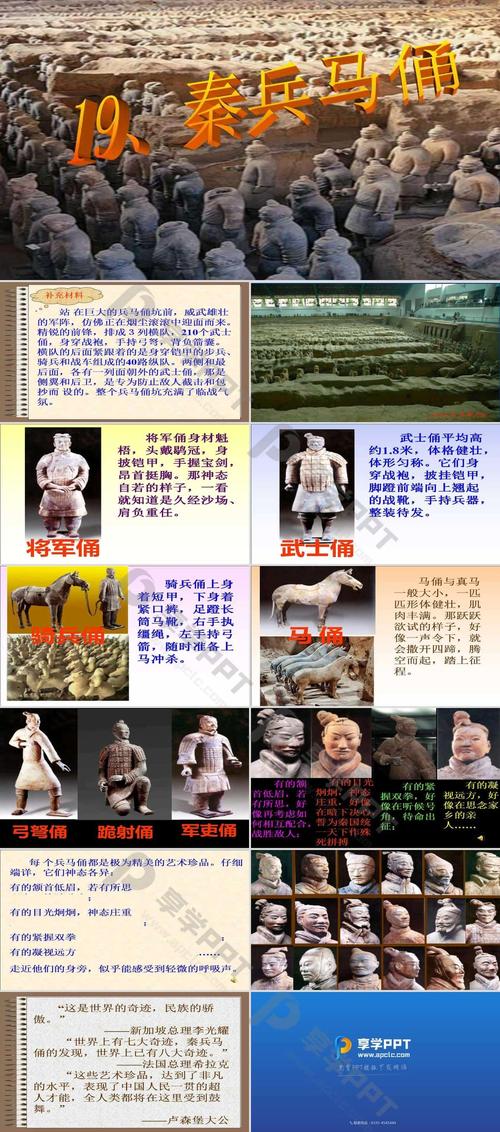
What Are the Facts About the Terracotta Horses?
The Terracotta Army is a vast collection of terracotta sculptures depicting the armies of Qin Shi Huang, the first emperor of China. It is a world-renowned UNESCO World Heritage Site and a testament to the power and artistry of ancient China. While the terracotta warriors are the most famous part of the army, the terracotta horses are equally impressive.
The Number and Types of Terracotta Horses
It is estimated that more than 600 terracotta horses are buried in the three pits of the Terracotta Army. These horses are not all identical. They are divided into two main types:
- Chariot Horses: The majority of the terracotta horses, 516, are harnessed to chariots. These horses are typically depicted in a four-horse team (known as a si ma) pulling a bronze chariot. They are shown in a dynamic pose, with their muscles tensed as if pulling a heavy load.
- Cavalry Horses: The remaining 116 horses are saddle horses, ridden by the terracotta cavalrymen. These horses are slightly smaller than the chariot horses and are depicted in a more relaxed stance. They are equipped with saddles, bridles, and other riding gear.
The First Excavation of Terracotta Chariot Horses
The terracotta chariot horses were first excavated in Pit 1 in 1976. This pit, the largest of the three, contains the main force of the Terracotta Army. The discovery of the horses, along with the warriors and chariots, sent shockwaves through the archaeological world and confirmed the immense scale and grandeur of Qin Shi Huang's mausoleum complex.
The Craftsmanship of the Terracotta Horses
The terracotta horses are a testament to the skill and artistry of the Qin dynasty craftspeople. Each horse is life-sized and meticulously crafted with incredible detail.
- Realistic Features: The horses are depicted with remarkable realism, capturing their muscular physique, flowing manes, and even the veins visible in their legs. Their expressions are also lifelike, with some horses appearing alert and eager, while others seem more stoic.
- Individualized Details: Despite being part of a large army, each horse is unique. They vary in breed, size, and posture, and have different markings and harnesses. This attention to detail suggests that the artisans were not simply mass-producing statues, but were striving to create a realistic and individualized depiction of the emperor's army.
- Use of Materials and Techniques: The horses were created using a modular construction method, with body parts molded separately and then assembled. This allowed for greater efficiency in production while maintaining a high level of detail. The horses were then fired in kilns at high temperatures, giving them their characteristic reddish-brown color.
The Significance of the Terracotta Horses
The terracotta horses are significant for a number of reasons. Firstly, they provide invaluable insights into the military technology and practices of the Qin dynasty. The horses' equipment, such as the chariots and harnesses, is depicted with great accuracy, offering historians a detailed glimpse into ancient Chinese warfare.
Secondly, the horses are a powerful symbol of the Qin dynasty's wealth and power. The sheer number of horses, along with their life-size scale and meticulous craftsmanship, reflects the immense resources and manpower that Qin Shi Huang could command.
Finally, the terracotta horses are a testament to the enduring artistry and craftsmanship of ancient China. They continue to captivate and inspire awe in visitors from around the world, serving as a reminder of the ingenuity and creativity of past civilizations.
Q&A
Q: What is the purpose of the Terracotta Army?
A: The Terracotta Army was created to accompany Qin Shi Huang, the first emperor of China, in the afterlife. It was believed that the army would protect him and help him rule in the next world.
Q: How were the terracotta horses made?
A: The terracotta horses were made using a modular construction method. Body parts were molded separately and then assembled. They were then fired in kilns at high temperatures.
Q: Are the terracotta horses still being excavated?
A: Yes, archaeological work at the Terracotta Army site is ongoing, and new discoveries are still being made. While many horses have been unearthed, it is believed that many more remain buried in the pits.